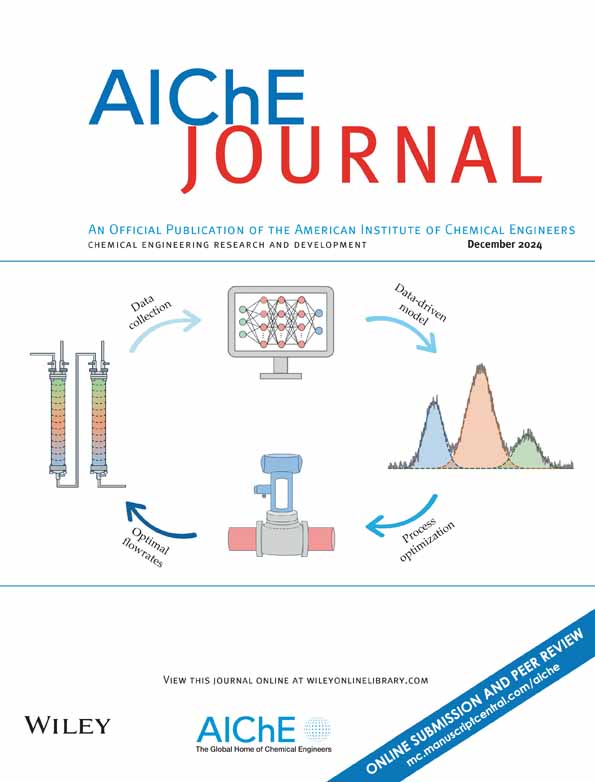Self-adaptive copper pairs on CuO(111) boosting ammonia catalytic combustion
IF 3.5
3区 工程技术
Q2 ENGINEERING, CHEMICAL
引用次数: 0
Abstract
Copper oxides exhibit outstanding performance in ammonia catalytic combustion, but a limited understanding of reaction mechanisms and the nature of active sites under operating conditions hinders further catalyst optimization. Utilizing density functional theory-based microkinetic simulations, we herein establish a comprehensive reaction mechanism on CuO(111), which enables the successful prediction of the experimental light-off temperature and identifies the self-adaptive copper pairs as key active sites. The NH2 coupling over the copper pairs is the critical step for N2 formation, which, along with H2O production, governs the overall reaction rate. Interestingly, the copper atom pairs can adjust their atomic distance ranging from 2.42 to 2.90 Å and their oxidation states between CuI and CuII in response to the adsorbed intermediates, thereby facilitating the catalytic cycle and specifically inhibiting NH2 dehydrogenation. Moreover, reducing copper pair distance through surface compressive strain can further lower the activation energies of rate-determining steps and enhance the reactivity.CuO(111)上自适应铜对促进氨催化燃烧
铜氧化物在氨催化燃烧中表现出优异的性能,但对反应机理和操作条件下活性位点性质的了解有限,阻碍了催化剂的进一步优化。利用基于密度泛函理论的微动力学模拟,我们建立了CuO(111)的综合反应机理,成功预测了实验熄火温度,并确定了自适应铜对作为关键活性位点。NH2在铜对上的偶联是生成N2的关键步骤,N2和H2O的生成决定了整个反应速率。有趣的是,铜原子对可以根据吸附的中间体调节其在2.42 ~ 2.90 Å之间的原子距离和在CuI和CuII之间的氧化态,从而促进催化循环并特异性抑制NH2脱氢。此外,通过表面压缩应变减小铜对距离可以进一步降低速率决定步骤的活化能,提高反应活性。
本文章由计算机程序翻译,如有差异,请以英文原文为准。
求助全文
约1分钟内获得全文
求助全文
来源期刊

AIChE Journal
工程技术-工程:化工
CiteScore
7.10
自引率
10.80%
发文量
411
审稿时长
3.6 months
期刊介绍:
The AIChE Journal is the premier research monthly in chemical engineering and related fields. This peer-reviewed and broad-based journal reports on the most important and latest technological advances in core areas of chemical engineering as well as in other relevant engineering disciplines. To keep abreast with the progressive outlook of the profession, the Journal has been expanding the scope of its editorial contents to include such fast developing areas as biotechnology, electrochemical engineering, and environmental engineering.
The AIChE Journal is indeed the global communications vehicle for the world-renowned researchers to exchange top-notch research findings with one another. Subscribing to the AIChE Journal is like having immediate access to nine topical journals in the field.
Articles are categorized according to the following topical areas:
Biomolecular Engineering, Bioengineering, Biochemicals, Biofuels, and Food
Inorganic Materials: Synthesis and Processing
Particle Technology and Fluidization
Process Systems Engineering
Reaction Engineering, Kinetics and Catalysis
Separations: Materials, Devices and Processes
Soft Materials: Synthesis, Processing and Products
Thermodynamics and Molecular-Scale Phenomena
Transport Phenomena and Fluid Mechanics.
 求助内容:
求助内容: 应助结果提醒方式:
应助结果提醒方式:


